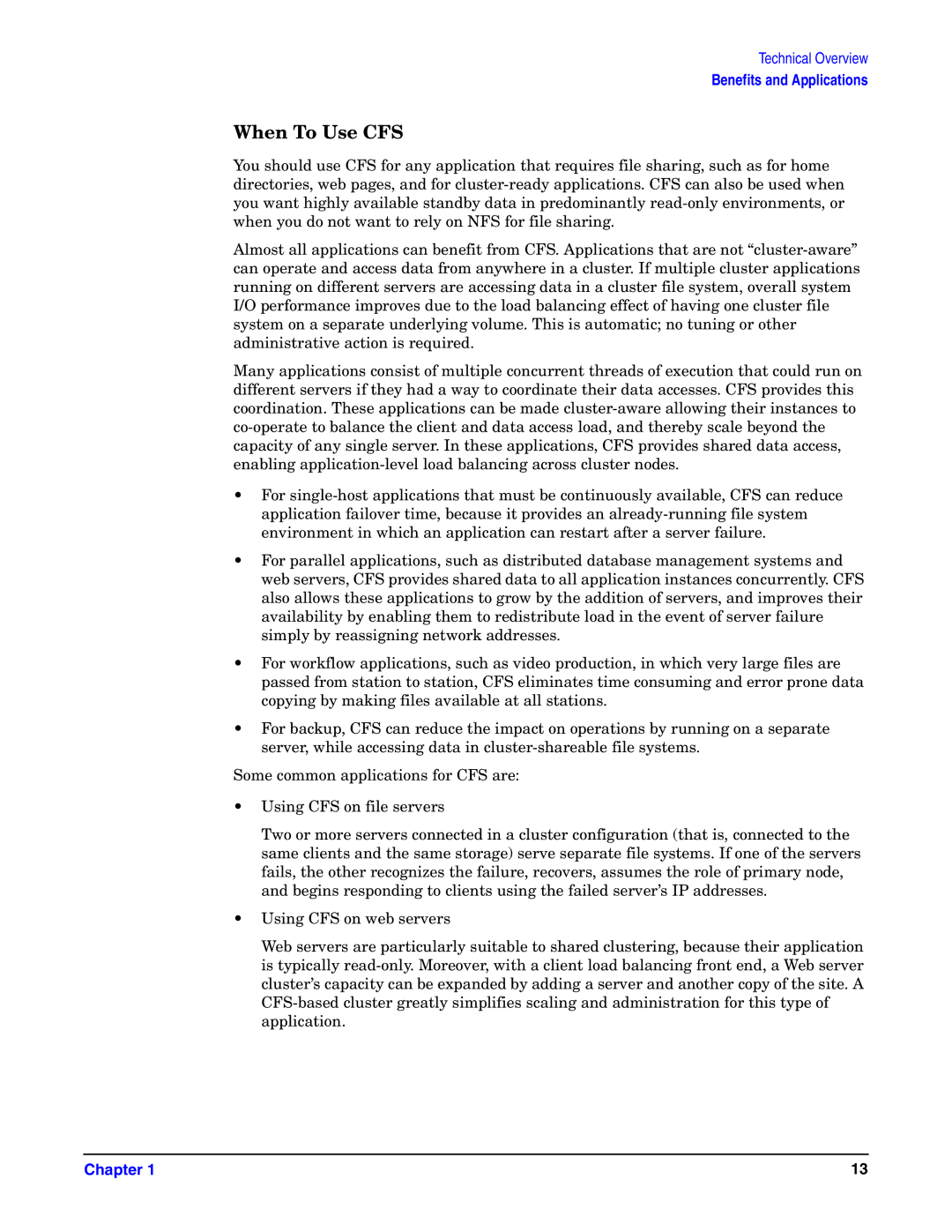Technical Overview
Benefits and Applications
When To Use CFS
You should use CFS for any application that requires file sharing, such as for home directories, web pages, and for
Almost all applications can benefit from CFS. Applications that are not
Many applications consist of multiple concurrent threads of execution that could run on different servers if they had a way to coordinate their data accesses. CFS provides this coordination. These applications can be made
•For
•For parallel applications, such as distributed database management systems and web servers, CFS provides shared data to all application instances concurrently. CFS also allows these applications to grow by the addition of servers, and improves their availability by enabling them to redistribute load in the event of server failure simply by reassigning network addresses.
•For workflow applications, such as video production, in which very large files are passed from station to station, CFS eliminates time consuming and error prone data copying by making files available at all stations.
•For backup, CFS can reduce the impact on operations by running on a separate server, while accessing data in
Some common applications for CFS are:
•Using CFS on file servers
Two or more servers connected in a cluster configuration (that is, connected to the same clients and the same storage) serve separate file systems. If one of the servers fails, the other recognizes the failure, recovers, assumes the role of primary node, and begins responding to clients using the failed server’s IP addresses.
•Using CFS on web servers
Web servers are particularly suitable to shared clustering, because their application is typically
Chapter 1 | 13 |
